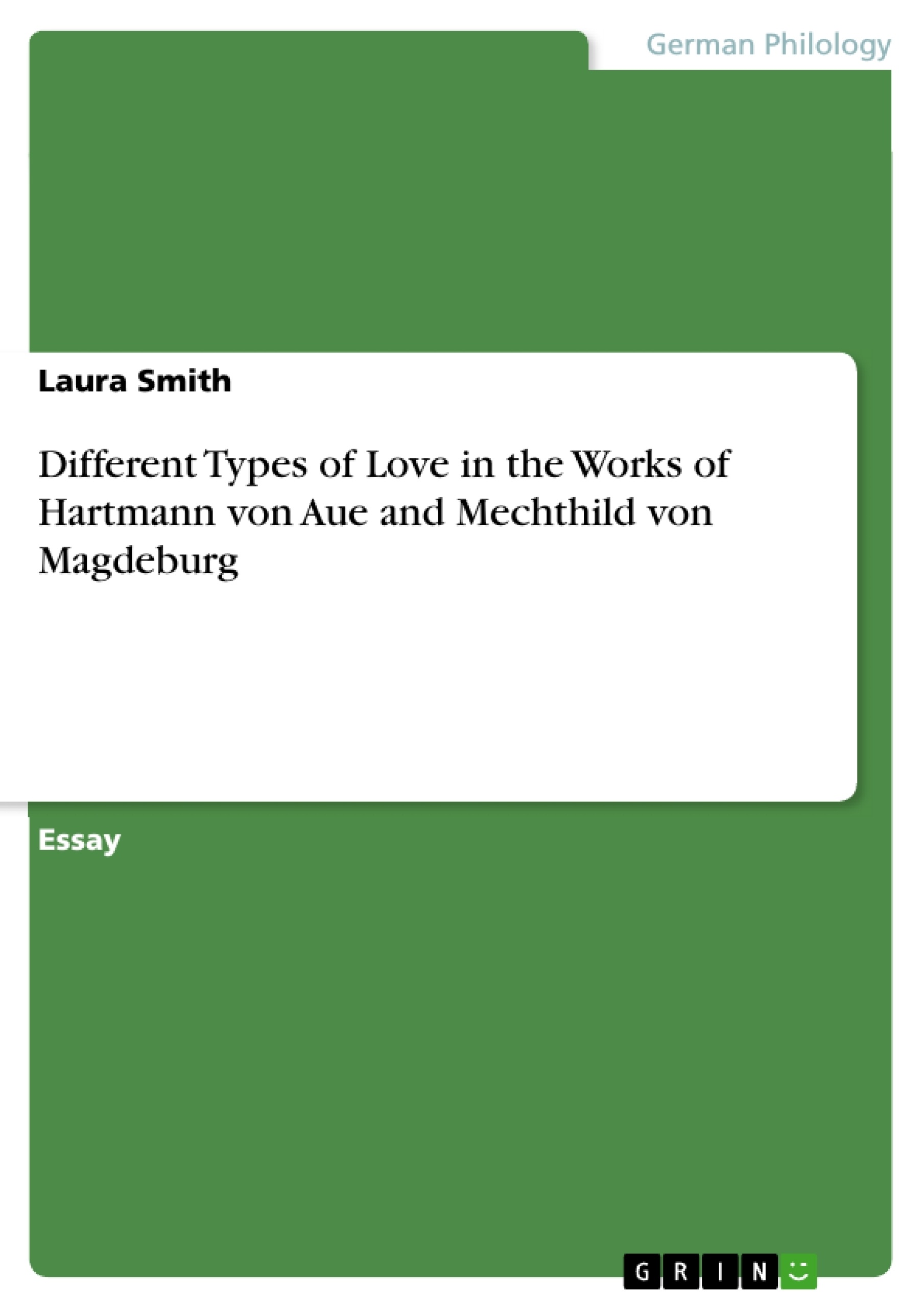Varying types of ‘love’ are present in every type of literature. Love for oneself, love for God and love for another person are the most common denominations and all three are present in the works of Middle High German author Hartmann von Aue and medieval mystic Mechthild von Magdeburg. The relationship between the interrelating types of love differs from text to text but each enriches the other and results in an interesting experience for the reader. Hartmann’s Der Arme Heinrich may have been written out of love for God, as is suggested in the introduction (Von Aue, line 25) but the titular Heinrich’s sexual love is at the heart of the plot. Equally, Mechthild’s works may aim to distance itself from such expression of sexual love as its author was a nun. However, through the exploration of her own love for God, as will be discussed, she cannot entirely avoid it.
- Quote paper
- Laura Smith (Author), 2013, Different Types of Love in the Works of Hartmann von Aue and Mechthild von Magdeburg, Munich, GRIN Verlag, https://www.grin.com/document/295714
-

-

-

-
Upload your own papers! Earn money and win an iPhone X. -

-
Upload your own papers! Earn money and win an iPhone X. -

-
Upload your own papers! Earn money and win an iPhone X. -

-
Upload your own papers! Earn money and win an iPhone X. -

-
Upload your own papers! Earn money and win an iPhone X.

